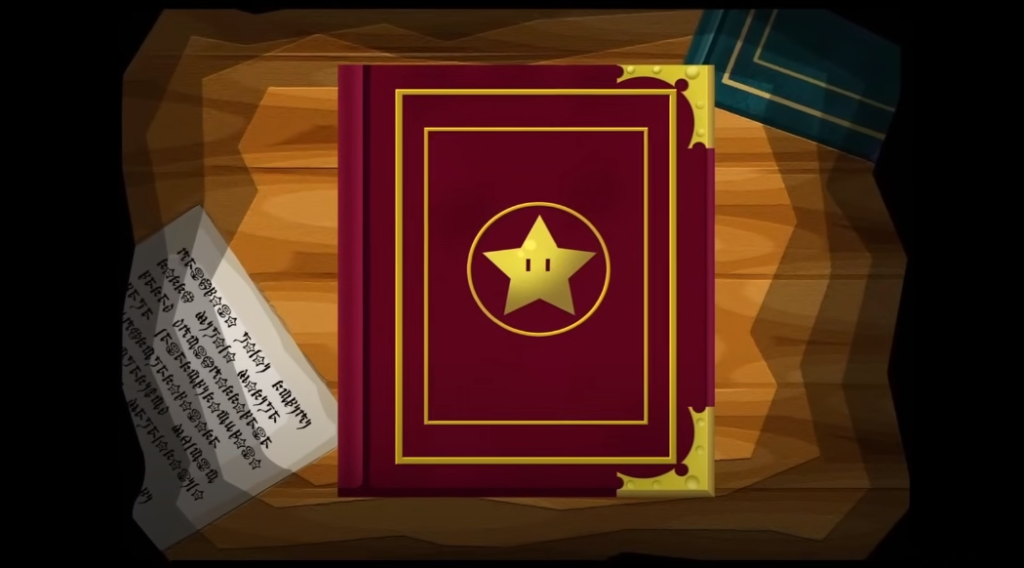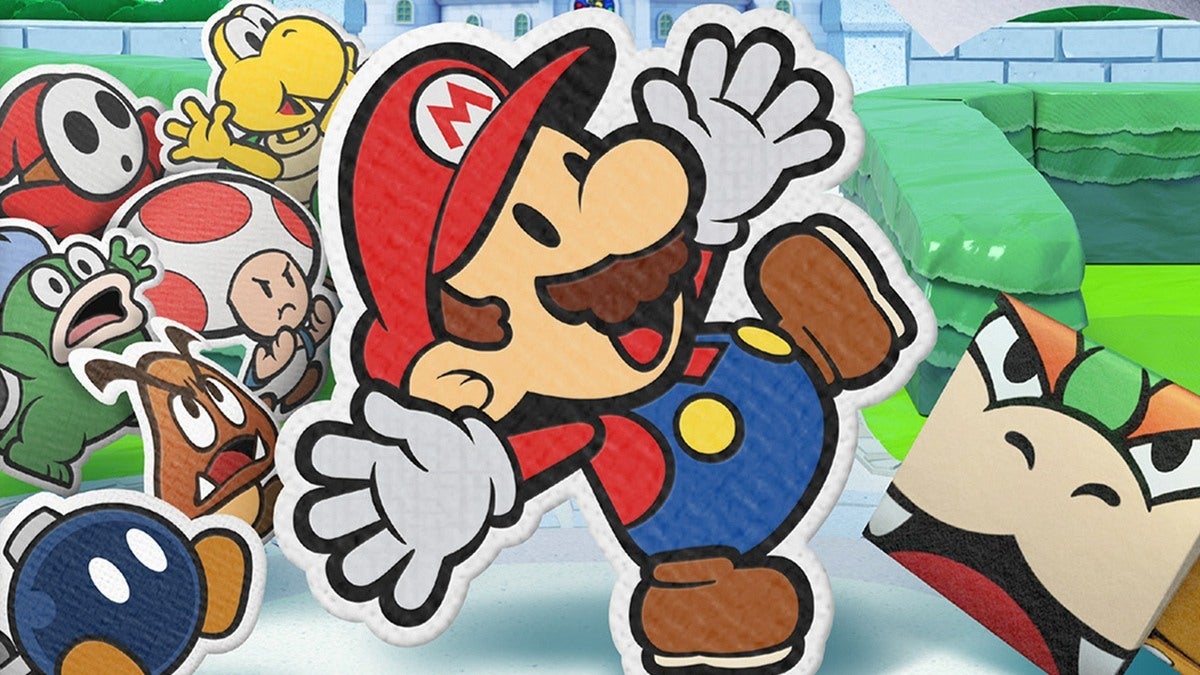For many subseries in the Mario universe, the last few years have not been particularly kind to them. From Mario Party to Mario Sports to, of course, Paper Mario, the original games in the series are considered classics, while the newer titles are not quite. Usually over time, Nintendo has tried new things with the newer games in these series, many of which haven’t quite worked. One of those series I mentioned in the Paper Mario series, which started on the Nintendo 64 with the original Paper Mario. This RPG series has seen some huge changes over the last couple of decades. The series has always been known to always try to spice things up. Paper Mario’s sequel, The Thousand-Year Door, is considered untouchable, which seemingly led Nintendo to try new things with the series, which led to Super Paper Mario (which had mixed reactions) and finally Paper Mario: Sticker Star (which had lots of negative reactions). Over time, Nintendo has strayed away from what Paper Mario introduced and excelled, which shows when you compare the original Paper Mario as well as The Thousand-Year Door to the later games, including Paper Mario: Color Splash and The Origami King. So, if Nintendo were to ever create another Paper Mario game, there are a few things that the game will need if it wants to go back to the original game’s roots. I’m going to be sharing 5 essential aspects of the series that the next game needs to make the series great again. Without further ado, let’s-a-go!

#5: Deeper Plots
One thing about Paper Mario: The Thousand-Year Door that shocked me on my first playthrough was that the game had an interesting story. Mario games have never been known for their stories, but Paper Mario has been different. Paper Mario: The Thousand-Year Door is the main game that had an incredible plot, which includes Mario going on adventure to find the seven Crystal Stars while Peach has been captured by Sir Gordus. What is so cool about this story is that everything makes sense. Sir Grodus actually has a reason as to why he captures Peach, which we learn as the game progresses through neat segments in between chapters where you control Peach in her captivity. It’s a neat change of pace compared to just going from mission to mission. Stuff like this is non-existant in the newer Paper Mario games, where you just go from world to world without anything else sprinkled in. Paper Mario: The Thousand-Year Door even lets you control Bowser as well, which just adds to the charm of the game. There is so much story in this game that keeps players going and is a big reason it’s so easy to get addicted to this game. This is something Paper Mario has always had, but not always excelled at. Most newer Paper Mario games are still packed with charm and unique elements, but they still are packed in pretty shallow stories. The earlier Paper Mario games feel like storybooks coming to life, while the newer games just feel like blank pieces of paper coming to life.

#4: Evolving Moveset
When it comes to Mario games, there are very few movement options to make the game very simple for their casual audiences. Mario is usually just able to jump, crouch, and run, aside from the new abilities power-ups give him. However, one neat aspect of Paper Mario is how he’ll gain more abilities over time. Usually, in Paper Mario: The Thousand-Year Door as an example, Mario will come across multiple chests throughout the game with spirits locked inside them. When you let them out, they ‘curse’ you with an ability that will actually greatly help you throughout the rest of your journey. This includes turning into a paper airplane, a boat, becoming thin to slip through narrow areas, and even escelating Mario’s jump and hammer attack. What is neat about the game is that as you explore the world, you’ll be able to do more now with the help of new abilities that can help you access new places. This is similar to how other games, like Metroid work. In the sewers under Rogueport, every pipe to every world is accessible, but you can only reach them once you have specific abilities, which I really admire. When it comes to the modern Paper Mario games, they don’t have anything like this. Whatever abilities to have to start the game are the only abilities you’ll have to end the game. This seemingly simple mechanic goes on a long way in making it feel as though you’re progressing through the game, and it makes it even better to explore previous areas where tons of other areas are now accessible. But, if the games tries to have this feature, there’s one more thing the series needs to change.

#3: Replace World Map
I mentioned that Paper Mario: The Thousand-Year Door’s new abilities allow you to reach new areas in the Rogueport sewers, to reach pipes to the game’s many worlds. However, the newer Paper Mario games don’t even have anything like the Rogueport sewers or even the original Paper Mario’s Toad Town tunnels. Instead, Paper Mario: Sticker Star and Paper Mario: Color Splash sport a standard world map that makes the games feel closer to a standard platforming Mario game compared to a standard Mario RPG game. The world map greatly deadens the structure of the game, making it feel less like you’re exploring multiple huge regions and going on unique missions, and more like you’re just going from level to level with the collectible at the end replacing the flagpole. It just feels very simple and linear, while the older games (while still linear) feel much more open-ended. The next Paper Mario game doesn’t need to exactly build a huge area with tons of secret passages, like Toad Town’s tunnels or Rogueport’s sewers, but it should at least get rid of the world map.

#2: Partners
Before I talk about this subject, I need to make one major thing clear: no Paper Mario game after Super Paper Mario has true partners. They don’t. Disagree with me all you want, but Kersti, Huey, and Olivia (from Sticker Star, Color Splash, and Origami King respectively) are not true partners. When I think of partners, I think of characters that join Mario on his journey to assist him in the overworld and in battle. Not only do Kersti, Huey, and Olivia barely help in the overworld aside from giving hints, but they do nothing in battle. In the original two Paper Mario games, partners are characters with unique personalities and abilities who help Mario in the overworld and when fighting enemies in battle. As an example, Watt from the original Paper Mario can light up dark areas in the overworld, while attack enemies in battle with a range of shocking attacks. In Paper Mario: The Thousand-Year Door, Flurrie can blow peeled paper to reveal hidden areas in the overworld and attacks in many different ways during battle including the body slam and lip lock. Mario’s party grows as he meets up with new members throughout his adventure, and they all can assist him in various ways in the field and during battle, which makes puzzle-solving more perplexing and difficult bosses a bit easier as the game progresses. Paper Mario: The Origami King definitely comes closer to this party system than the bland ‘partners’ from Sticker Star and Color Splash, however it definitely is still lacking compared to the original games.

#1: Redesigned Battle System with Experience Points
The biggest issue with the modern Paper Mario games is with the battle system, which was a highlight of the first three games. The Paper Mario series always loves to try new things, but the battle system redesign in Paper Mario: Sticker Star was extremely simple, barebones, and nowhere near the incredible design of the battle system in the games that preceded it. Instead of Mario having normal attacks and special attacks using a multitude of points including flower points (FP) and star power (SP), Sticker Star’s attacks come in the form of stickers that you find across every area you explore. Each sticker is a different item or attack, such as a mushroom or jump attack. Plus, the game has no experience points, like the star points in previous games, meaning there is no reason to fight enemies. The battle system in previous Paper Mario games was perfectly designed and was fun to use, while Sticker Star tried a new gimmick that didn’t work. However, Nintendo tried to keep using it, as Paper Mario: Color Splash was practically the same. The only main difference was that you got coins, paint, and possibly cards after a fight instead of experience points, which gives some incentive to fight enemies, but still not much. The Origami King then decided to redesign the system again into an even worse battle system that acts as a strange puzzle where Mario must try to line up enemies on a circular-shaped battlefield by turning the battlefield’s rings. Mario won’t be limited to attack with stuff he finds in the overworld, but there are (again) no experience points. The original battle system was so well-designed that I have no idea was Nintendo keeps trying to improve the battle experience. It’s already great, so please just bring it back.
What is your favorite Paper Mario game? Let me know in the reply section below.
Follow us on our social media:
Twitter: @RyansFortress
Instagram: @ryans_fortress

